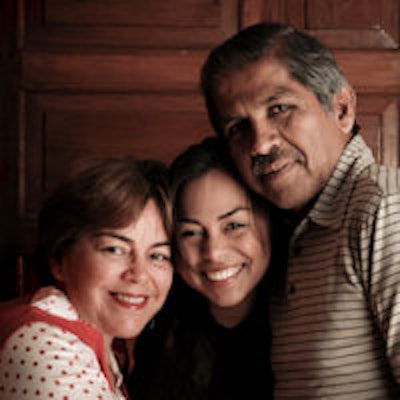
A new mobile risk assessment tool may help identify children with risks for early childhood caries (ECC), particularly those in low-income, primarily Hispanic, urban populations, according to a study in the Journal of Public Health Dentistry.
Introduced in 2011, MySmileBuddy is a mobile application to help health workers assess a child's risk for early childhood caries and counsel that child's family on preventive lifestyle changes. It was developed by a multidisciplinary team of health professionals from Columbia University.
Researchers from the university's College of Dental Medicine tested the assessment tool's effectiveness in the low-income, predominantly Hispanic population served by its postdoctoral pediatric dentistry clinic in New York City. The study authors, led by Christie Custodio-Lumsden, PhD, RD, CDN, reported that the application may have clinical use for identifying children with early precursors of cavitations. However, the tool does not "add value in identifying children with extant lesions," they noted.
"Findings from the ... study are promising, suggesting that [MySmileBuddy] may be a valid tool for assessing a child's ECC risk," the study authors wrote (J Public Health Dent, October 6, 2015).
Mostly Hispanic population
MySmileBuddy was developed by a Columbia team of pediatricians, dentists, and nurses and funded by the National Institute on Minority Health and Health Disparities. The tool is designed to assess ECC risk by collecting data on a child's exposure to etiologic risk factors, such as diet, fluoride use, and history of disease, and helps with disease management counseling with caregivers. It is also "culturally, linguistically, and visually customized for the low-income, primarily Hispanic population" served by the university's pediatric dental clinic, the study authors noted.
“Findings from the ... study are promising, suggesting that [MySmileBuddy] may be a valid tool for assessing a child's ECC risk.”
The researchers tested the assessment tool's effectiveness against four measures of ECC activity: semiquantitative assays of salivary mutans streptococci levels, visible quantity of dental plaque, visual evidence of enamel decalcifications, and cavitation status (none, ECC, severe ECC).
The study included 108 children (ages 2 to 6 years) from the university's pediatric dental clinic. All participants received a comprehensive oral examination and saliva culture for assessment of ECC indicators, and their caregivers completed an iPad-based MySmileBuddy assessment. The tool calculated diet risk and comprehensive ECC risk scores.
The researchers found the diet risk scores were significantly positively associated with salivary mutans (p < 0.05) and approached significance with visible plaque levels (p < 0.1). The tool's comprehensive risk scores also were significantly associated with both oral mutans and visible plaque (p < 0.05).
More than 60% of children had moderate levels of salivary mutans streptococci and more than 32% had a low level. The rest (a total of eight children) had high or very high levels. Almost half (46.3%) of the children had mild amounts of plaque, and less than 5% had severe amounts of visible plaque. The data also revealed that nearly two-thirds of children presented with no evidence of decalcification (n = 71; 65.7%).
However, the tool found that 51% of children had evidence of ECC, and 38% met the diagnostic criteria for severe ECC.
AAPD recommendations
The authors noted that the American Academy of Pediatric Dentistry's 2014 recommendations suggest that ECC risk assessment models should "incorporate evaluation of a multitude of ECC-related factors, including diet- and fluoride-related behaviors, individual susceptibility, socioeconomic status, and cultural influences."
MySmileBuddy, unlike other tools, "meets these recommendations by incorporating assessment of several known risk factors from varying levels of influence," the study authors wrote.
"The results of this concurrent criterion validation analysis confirm that [MySmileBuddy] accurately identified children exhibiting early stage indicators of the ECC disease process (i.e., high levels of salivary mutans streptococci and visible dental plaque)," they noted.
The study's limitations included a small sample size and that findings are also limited to the population under investigation. While the tool was customized for this population, the authors noted that this ease of customization and "cultural tailoring" are strengths of the tool.
"[MySmileBuddy] may thus provide clinicians and other health workers with an easy-to-administer and effective means to assess risk, inform risk-based care, and provide children and their families with targeted instruction to promote ECC prevention and facilitate disease management through counseling to encouraging positive behavior change," the authors concluded.



















